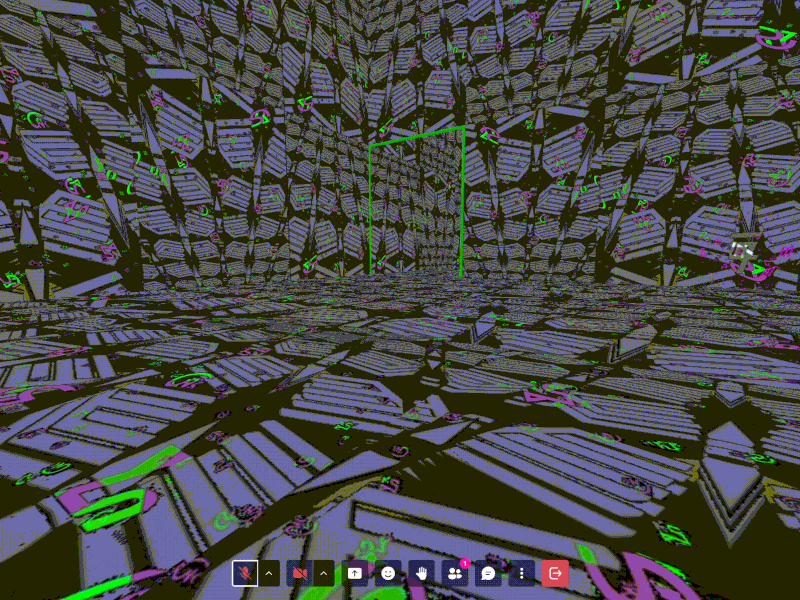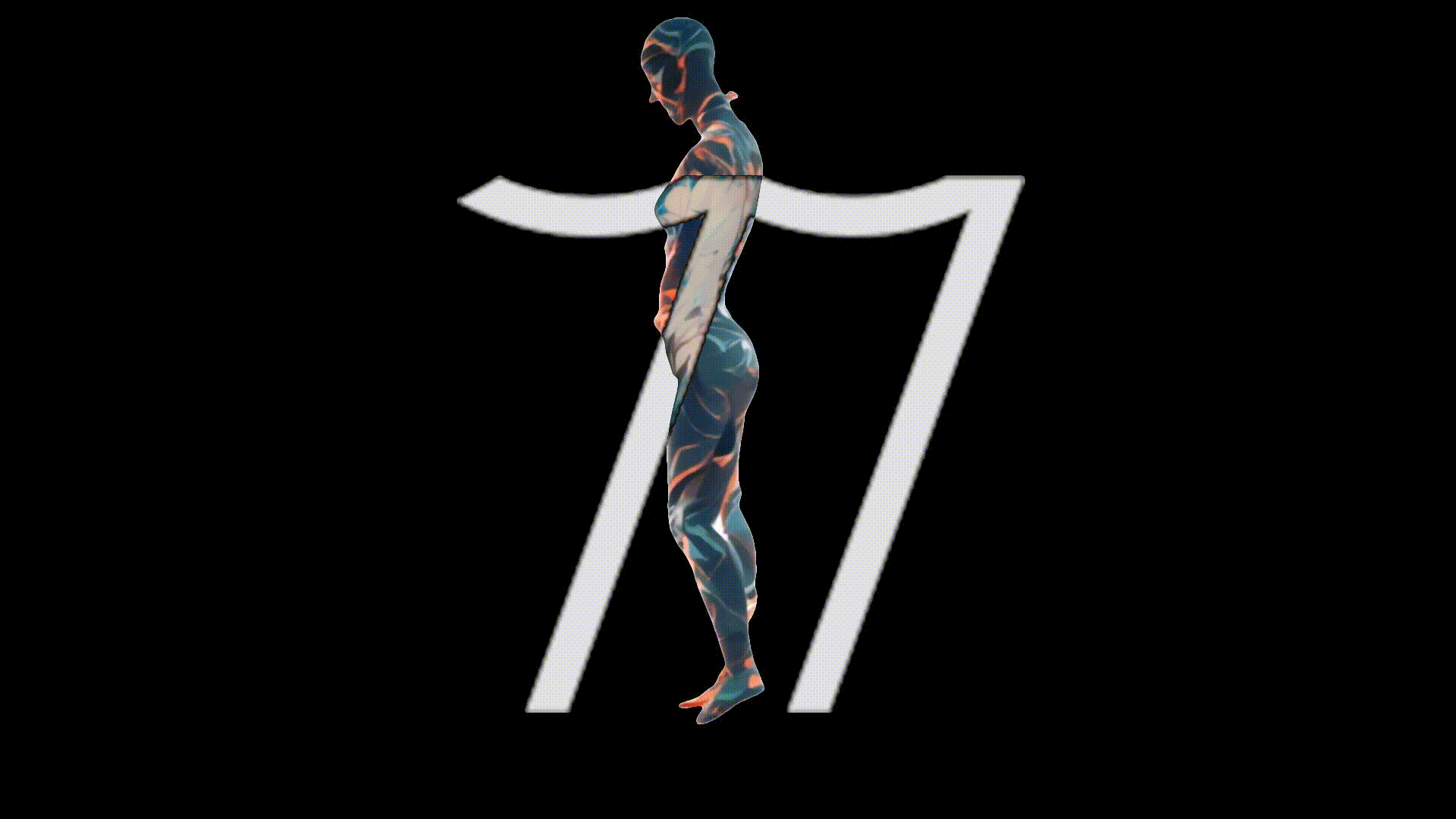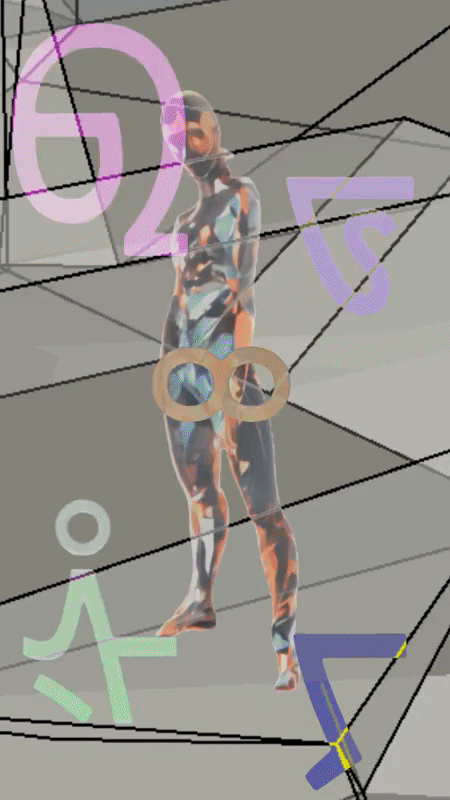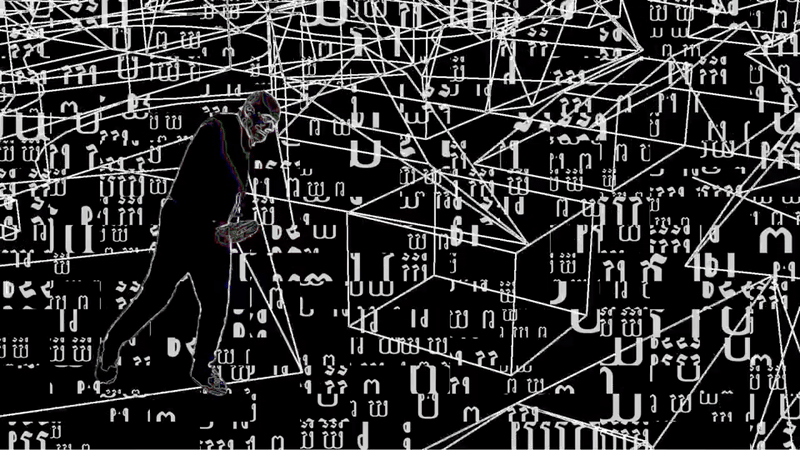Endangered Scripts, AI, and Synesthetic Experiments: A Conversation with Javier Aparicio Frago
By Cansu Waldron
Javier Aparicio Frago is a multidisciplinary artist whose work moves fluidly between painting, music, and technology. Based in Spain, his practice blends traditional artistic techniques with new media, creating immersive experiences that span soundscapes, stage performances, and visual artworks. With a deep commitment to research and teaching, Javier combines creative experimentation with scholarly rigor, exploring the intersections of art, movement, and digital innovation.
Javier’s academic background is extensive, including a PhD in Humanities from Carlos III University of Madrid, master’s degrees in Performing Arts and Art & New Technologies, and a Fine Arts degree from the University of Barcelona. He has performed, exhibited, and presented at festivals and conferences around the world — from Paris and London to New York and Budapest — and participated in residencies across Europe and South Korea. Collaborating with companies and collectives in dance, theater, and contemporary performance, Javier creates works that invite audiences to explore space, time, and gesture in ways that blur disciplinary boundaries and expand the possibilities of artistic experience.
We asked Javier about his art, creative process, and inspirations.
Can you tell us about your background as a digital artist? How did you get started in this field?
As a way of connecting artistic disciplines, I realized that, as a musician, the sound I produced playing instruments would vanish into the environment, while in visual arts, images remained on a surface but could not express the passage of time. This contrast led me to explore ways of capturing both presence and duration — first through music recording, then through visual experiments in screen printing and digital media, and eventually through projects that seek synesthetic experiences.
You often explore the relationship between the body, language, and space. What first drew you to that intersection, and how has your understanding of it evolved over time?
I first discovered that connection during a movement life drawing practice, where fine arts students joined classical and contemporary dance classes accompanied by a pianist. We were supposed to draw the dancers, but I felt there was something beyond movement itself — a kind of communication between dance and music that I couldn’t quite capture with a pen. Years later, as a dance student and playing music in contact improvisation jam sessions, I created in collaboration with an engineer a prototype of a programmable garment that worked as a hyperinstrument integrated into the body to produce real-time music, which became part of my PhD research. Since then, I’ve been exploring other formats using online materials, focused on the experience of the self in front of the camera and its reconfiguration in ectopic spaces.
Your recent research touches on "endangered writing systems." That's such a fascinating concept — what does it mean to you, and how do you translate that into visual or sonic form?
We live in a global culture, with its good and bad sides. One of the downsides, along with the loss of biodiversity, is the erosion of cultural richness. Throughout history, anthropology has asked how the mind is shaped through language — but what about writing systems? (Some time ago, I was in a jjimjilbang in Seoul and saw a child doing math homework. I got closer and noticed that the exercises looked like something from a secondary school student, even though he was only eight. When his mother noticed my surprise, she downplayed it by saying that Koreans are especially good at math because their language is based on the combination of elements). Although Korean is a fully established writing system, I’m drawn to all non-Latin scripts, especially those that are on the verge of disappearing. I believe there’s an aesthetic quality in the shapes themselves, from which meaning can emerge even without understanding the language — an aesthetic of form that allows narratives to unfold beyond linguistic comprehension. It is said that knowledge is in language, but I believe it also lies in form. Words can shape or manipulate reality — and sometimes, not being allowed to say what you think can have devastating consequences.
My interest in other alphabets began when I was a teenager. I kept a personal diary and, to conceal the names of the people I mentioned, I replaced their initials with characters from different writing systems. Later, I started creating paintings where human figures interacted with letters — a kind of personification of language.
The sound interpretation of my works based on writing systems has evolved from an asemic understanding of language. It involves real-time sound composition and manipulation in dialogue with moving images. A sound version of the installation I developed during my residency at BME (Budapest University of Technology and Economics) will be presented in Madrid at the INSONORA festival in March 2026.
How does your experience as a performer and teacher inform your visual art practice? Do you find the classroom and the studio influencing each other?
I believe that being an art teacher —or a teacher in any field— requires maintaining a real and permanent connection with the practice itself, so that what you teach is grounded in personal experience rather than only theoretical knowledge. At the same time, I feel there’s a certain distance between my own creative interests and what my students need, since the main goal is to provide them with tools and ways to express themselves, rather than focusing on what personally interests me at a given moment.
On the other hand, the performing arts have been a huge inspiration for my work, from the presence and movement of the body on stage interacting with the elements in the space; some of my works I conceive as possible sets for unknown characters in spaces that do not exist.
Let's talk about The AI Chronotopes: Moons, Castles, Trees! Can you tell us about your piece in the exhibition? What questions are you hoping to raise through it?
I incorporated artificial intelligence in some part of the creative process. In this case, I used it to generate poetic texts inspired by the title of the exhibition in an unfamiliar language and script: Buhid, originally from Mindoro Island, The Philippines —a country with a colonial past, where languages and writing systems still survive despite the dominance of the Latin alphabet. (A colleague with Filipino roots recently told me that among younger generations, it has become popular to get tattoos using this script) although it’s still rare to find signs or writings in Buhid in daily life.
In this —and other projects involving endangered scripts— I’m interested in creating a dialogue between the digital and the archaic, because I resist the idea that new technologies necessarily represents progress. Sometimes, the knowledge that existed before may have been even deeper. The use of endangered or nearly forgotten writing systems to build a visual discourse is also connected to an idea that has stayed with me for a long time: the path toward abstraction that painting has taken, which remains misunderstood or even rejected by many. It often seems that abstract images are perceived as lacking aesthetic value, as if they could be easily dismissed. My artworks aim to communicate through abstract elements, even when that communication has no fixed meaning —I’m drawn to the visual and formal dimension of language, as a kind of semantic abstraction.
For the exhibition, The AI Chronotopes: Moons, Castles, Trees, I used AI for the opposite purpose: to give meaning to poems written in Buhid. At first, the AI resisted, assuming I was engaging in something culturally inappropriate or disrespectful. Once it finally produced some verses, I began shaping a narrative where digital characters and virtual environments became part of that unfolding story. I like to think about the emotional potential of machines —about the sensibility that can exist within the artificial. I enjoy creating scenarios where poetry can emerge from a straight angular line or from the complexity of a mathematical theorem.
What is a profound childhood memory?
I remember coming home from school and spreading my collection of miniature cars out on the bed, which I watched as if it were a vast terrain where the wheels were drawing their grooves and imitating races and struggles like in a movie.
What is a fun fact about you?
I have absolute pitch, so I can tell what notes the music I hear has even if they are not musical sounds, like traffic horns. I can constantly form chords in my head, which is sometimes not so fun.
What else fills your time when you're not creating art?
I like to travel as much as I can, and I enjoy long conversations with close friends.
What is a dream project you'd like to make one day?
I would like to create a labyrinth submerged in the earth like the cathedrals in northern Ethiopia.























